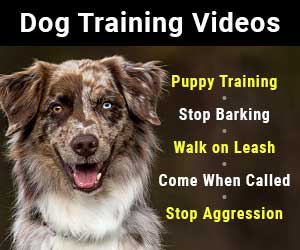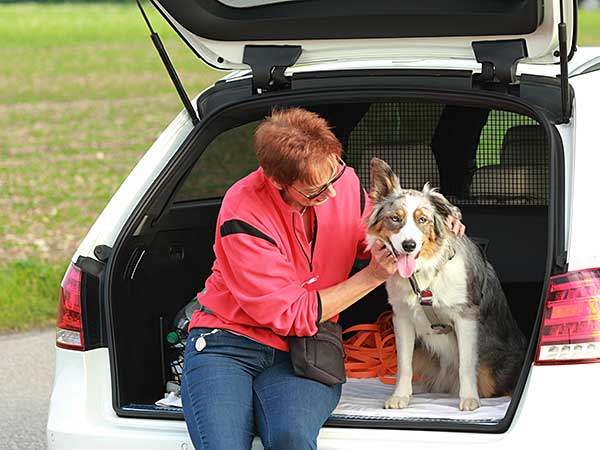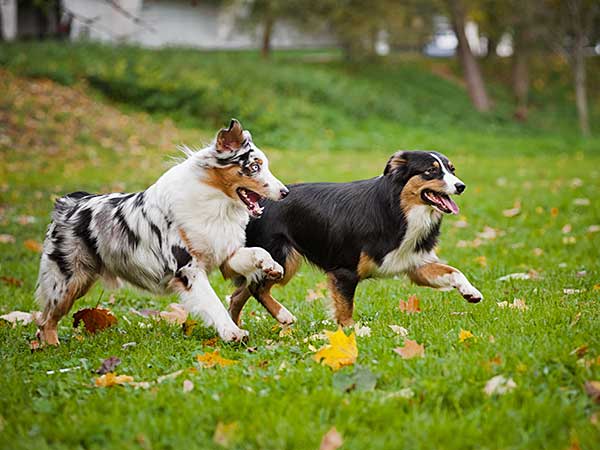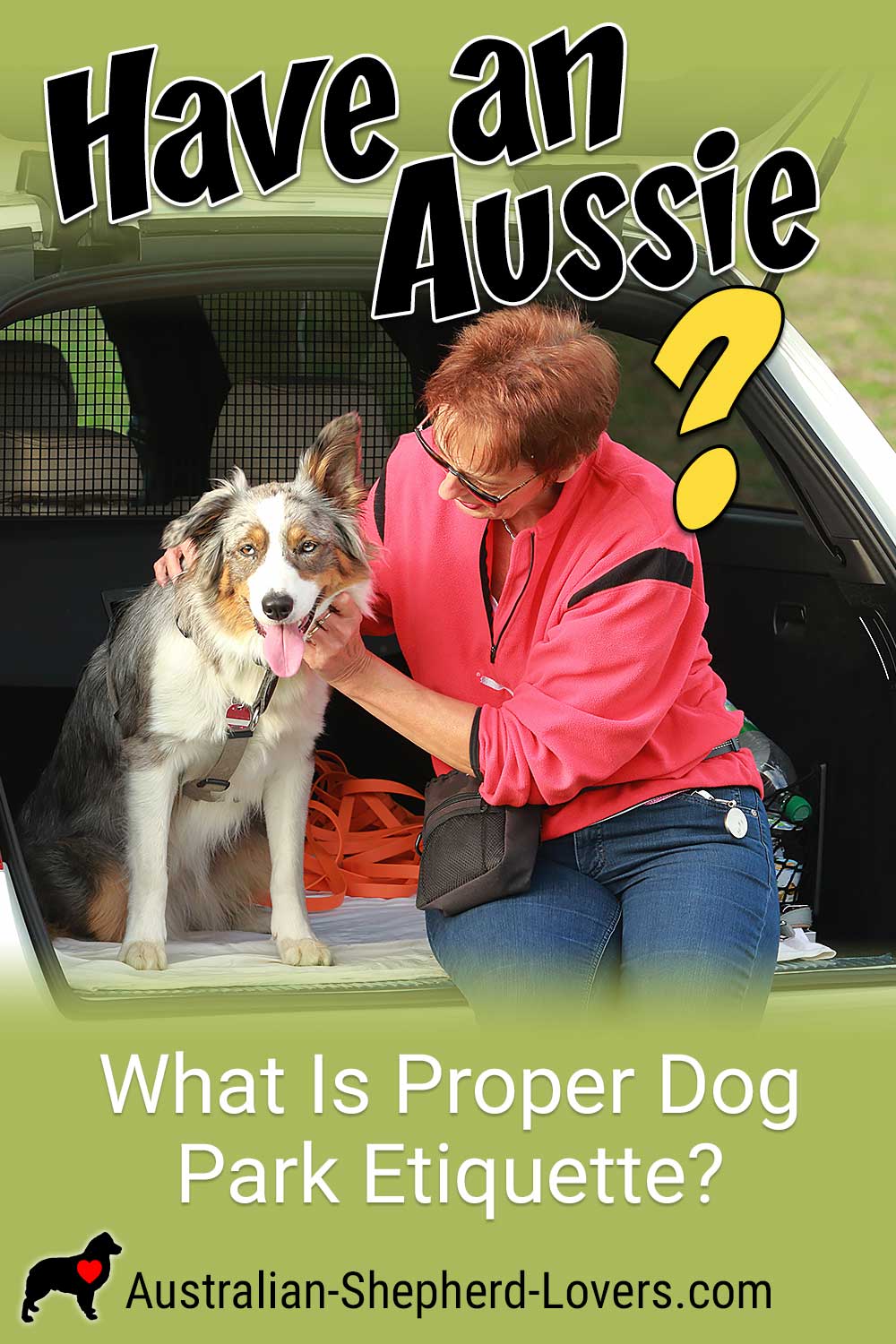
Dog Park Etiquette Rules You May Not Be Aware Of
What is proper dog park etiquette? Going to the dog park can be a fun experience for you and your Aussie, but only if you exercise the proper amount of caution, choose a park that suits your dog and be sure that you follow all the park's rules. That way you can be sure that your dog will have a good time and you can breathe easier knowing that he is safe.
It's no surprise that dog parks have increased in popularity in recent years, especially in big cities, where they offer a great opportunity for dogs to stretch their legs and get some fresh air as they may not live in places with enough room to get a good run. In fact, there are over 800 dedicated dog parks in the largest U.S. cities, with many variations in terms of size, amenities and, of course, dog park rules.
A dog park can offer a great opportunity to expend excess energy and socialize with other dogs but it's important to follow proper dog park etiquette in order to ensure your dog's safety and the safety of all the other dogs and owners who are present.
Dog Park Etiquette Can Also Mean Knowing When You Shouldn't Go at All
As enticing as a trip to the dog park may be, not all dogs are ready for the experience. In general, the following types of dogs should avoid dog parks:
- Puppies younger than 4 months old or any dog that isn't up to date on vaccinations — Without the proper vaccinations, dogs may be at risk for conditions such as Bordetella, Leptospirosis and canine influenza. Also, before going to the dog park, be sure your dog has been treated for fleas, ticks and heartworm.
- Female dogs in heat — The presence of a female dog in heat can cause a lot of disruption as well as increasing the possibility of unwanted pregnancy.
- Dogs showing signs of illness — Since many canine illnesses can be contagious, any dog showing signs of illness should stay home.
- Dogs who don't know the basic obedience commands — Dog parks can be very distracting places and you may need to get your dog under control quickly, so before going to the park be sure he can follow the basic obedience commands including come, down and stay.
- Shy or nervous dogs — The dog park can be overwhelming so you may want to socialize your shy or nervous dog before you go.
- Reactive or aggressive dogs — These dogs may not do well around strange dogs, especially dogs that are overly excited.
- Resource guarders — Dogs that are prone to guarding things, including their owners, their water dish or their toys, may have a particularly difficult time socializing with other dogs. This is a particular red flag for Australian Shepherd owners, as Aussies have a natural guarding tendency. Make sure your Aussie will be able to interact well with other dogs before heading to the park.
Of course, dog park rules don't apply only to the four-legged visitors. Be attentive to your dog at all times and be prepared to intervene at the first sign of trouble. Also be aware if he's showing signs of being uncomfortable or wanting to leave and listen to what he's telling you.
Dog Park Rules Can Vary From One Park to Another
Not all dog parks are created equal and there's no guarantee that your dog will be comfortable at every park. The AKC (American Kennel Club) recommends that you check out any park you're considering without your dog before you take him there and pay careful attention to their guidelines for dog park etiquette, which should be clearly posted by the entrance.
Along with that list of dog park rules, there are other conditions you should look for in a park. A good dog park should have secure fencing and ideally a double gate that allows you to shut your dog in safely before taking off his leash and letting him into the open area.
Once inside, you should notice whether the park is free of trash, equipment, and dog poop. Many dog parks will have stations that include dog poop bags but even if there isn't one, you should always be prepared to scoop and bag any poop as part of proper dog park etiquette, since leaving poop behind is both unsanitary and unsightly.
Dog Park Tips to Have the Most Fun While Staying Safe
Pay attention to how many dogs are around, since large groups of dogs can be intimidating. If the park you're interested in seems to be a popular one with a lot of visitors, you might want to schedule your dog's time there at off-peak hours to make it easier on him.
Communal water bowls aren't a good idea, as sharing a bowl may also lead to sharing unpleasant things like bacteria, parasites and viruses. If one of the dog park rules is that each owner brings their own water bowl, that's a sign they are looking out for the health of their visitors.
Another good sign for health and safety is a park that requires proof of vaccination and registration.
Finally, look at the other owners and see if they are paying attention to their dogs and reacting quickly to intervene if play gets too rough. That's not only a sign of good dog park etiquette, but a great indication of a safe environment.
No matter which park you eventually choose, you can avoid unnecessary conflict by leaving personal toys or balls at home and refraining from rewarding with treats until you are outside of the park. Going to the dog park can be a unique and enjoyable bonding experience for the two of you, but only if you follow dog park etiquette and make the best of your time there.
Check out these introductory dog training videos...
Have Dog Training Questions?
Check out these introductory dog training videos...
I want my dog to stop being aggressive.
I want some help training my new puppy.
I want my dog to stop barking at everything.
Get Australian Shepherd Info, Website Updates, Special Offers, and Cartoons...
FREE GIFT
You'll also receive a free copy of the ebook
My Everyday Dog Training Tools
by professional dog trainer Daniel Abdelnoor, "Doggy Dan"














 Loading Image...
Loading Image...